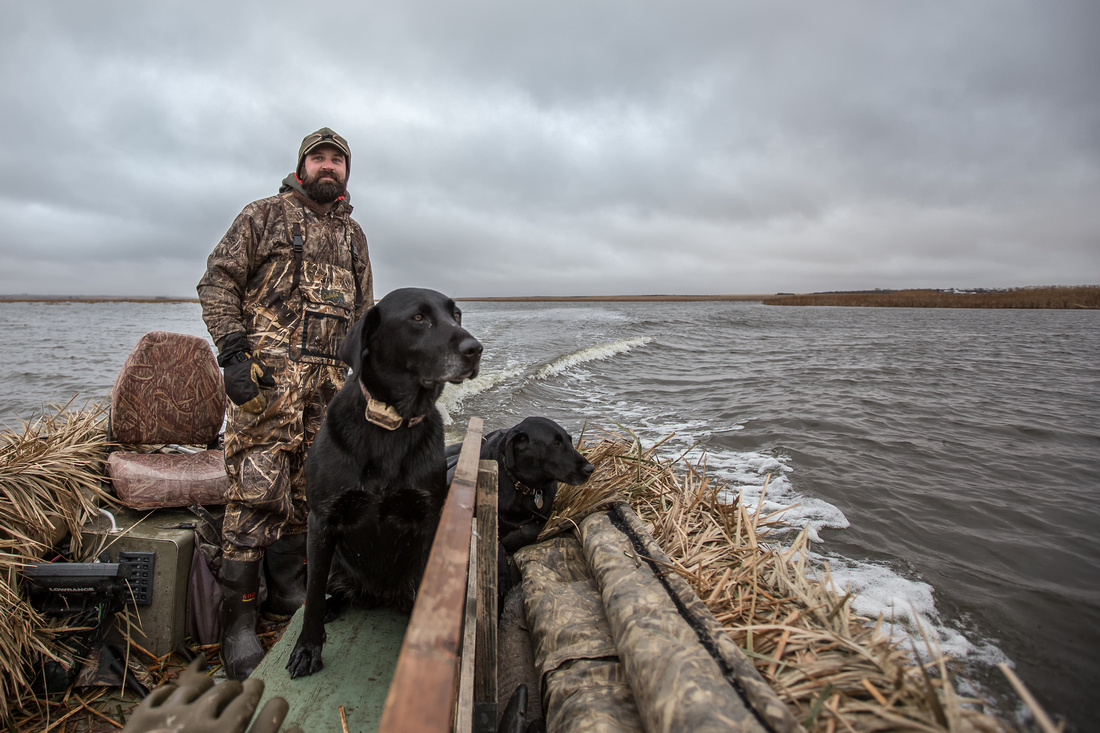I am going to use some time I have on a layover in the airport to write a little about the camera equipment I use. I am doing this mainly as a self-serving exercise as this is the question (one of the few) that I get most frequently on my Instagram page. I will be directing folks here for that purpose, so if you found this here from that avenue...welcome!
Before I talk about the specifics of the equipment I use, I want to discuss the balance of equipment, skill, and knowledge in acquiring good photos.
I will start by saying that equipment is important. Those who have good equipment seem to like to negate the importance of that equipment. They will say things like "an expert can use any camera to make great images" or that "the camera isn't important, it's the person holding it" and while those are or can be true in many instances, there are also instances where a better camera will without a doubt produce higher quality images. Many of those instances occur in the style of photography I like to do...low light hunting photos and images of fast-moving birds coming directly at the camera with objects in the background. High ISO images are a challenge for many less expensive cameras, and incoming birds are a challenge for many camera focus systems.
After I have discussed with several other photographers that do similar things to what I like to do, I like to think of camera equipment in the following way. If you gave me an entry-level camera and sent me into the marsh to take photos, that sure, I'd come back with some good images, but it wouldn't be the same as if I had my favorite setup. And why would I buy an expensive camera if it truly did not make any difference? And likewise, if you gave someone who had little experience my camera and sent them into the marsh, they probably would come back with some good images, but probably not the same as if someone who knew what they were doing was there. So, equipment is important in the fringes of performance, but for general photography, it probably does not matter nearly as much as does artistic ability or knowing how to use a camera.
With that above stuff out of the way, I will get into what I currently use for photographic equipment. I like to divide my photography into two parts...birds and not birds. Each has a different set of skill and equipment requirements. If you are here and reading this, you are probably looking for what I use for bird photography, so I will just cover that.
Bird Photography
A couple of years ago, I made a switch from Canon to Sony gear. I have been happy with the switch. I've always wanted to have some version of a dedicated sports camera for bird photos because of the autofocus system involved in those bodies. They are made for tracking and predicting fast/erratic motion. I believe that taking photos of wild ducks in a marsh setting is probably one of the toughest tests for a camera's autofocus system that you can find. Keeping track of a one-pound Teal as it zigs and zags its way to the water at 40mph with a cluttered background behind it is virtually impossible for many cameras, and that is why I go with the sports cameras. I currently use a Sony A9 because it has a great autofocus tracking system. I will offer a bit of info on other brands and what I'd currently recommend in 2021 for bird-specific photos.
-
Sony - A9. I have used A7III and it's OK for birds, but not great.
-
Canon - The R5/R6 seems to be great, and the 1DX series are all great options. I shot with a Canon 1DX for a few years, and it was awesome. The newer versions of that camera are excellent, I am sure. I would not hesitate to recommend one of these cameras even though they seem old. The 7D Mark 2 is now available used for great prices and it's a very capable wildlife camera. The Canon 1D4 is also a great option that you would be able to find at a great price. The Canon 5D4 has a great autofocus system and is just great all around. I believe that the Canon 90D has a solid autofocus system but I have not used it so I cannot say for sure.
-
Nikon - I have not used Nikon cameras much myself but the D500 is an awesome bird camera. The D850 is supposed to be good as well.
Beyond those recommendations, I do not have much to recommend simply because I suspect that most other bodies would be disappointing...not to say that others would not work but they wouldn't be up to the level of these mentioned above. Get what you can afford and start using it and learning, and you will see if you enjoy it, and you will also see what skill and equipment shortcomings you are running into. If you are going to ask about any other camera beyond these suggestions, my standard response would be, “It could work”.
Lenses
For lenses, I would suggest finding as long of a telephoto as you can get/afford. For years, I used a Canon 1 series with a 400 5.6 lens. It was a great, lightweight setup and many of my favorite photos are from that setup. Then I picked up the 100-400 v2 lens and that was great to have a little more of an option to zoom out if needed (although 95% of the time you will find that you are using a zoom lens for wildlife at its longest length). One of the reasons I got the A9 is that Sony has an amazing wildlife zoom that is not TOO expensive. It's a 200-600 and paired with that body it's a great, sharp, fast, accurate, and lightweight combo.
A note on lenses...do not expect a 600mm lens to solve problems of your photos not being clear enough when you "zoom in" on them. There is no way to make up for being too far away from a subject. If I want a nice, crisp, sharp photo of a single duck coming in that I could put on the wall, that bird probably needs to be under 30 yards and 20 yards is way better. Go out and measure off 20-30 yards sometime and see how close that really is. You can’t compensate for being too far away by buying better lenses or better cameras or using different editing software.
I hope this helps people understand what goes into some of these photos. The equipment is important, but it isn't the only answer. It won’t magically transform someone into an amazing photographer, although it will undoubtedly help once they have the skills and understanding that experience brings. These photos are HARD to get. Do not be frustrated if your photos don’t look like something you would see in a magazine right away. It will take time, research, failure, learning, experimenting, and work to get it all dialed in. I’ve been doing this for 12+ years consistently, sometimes 30-45 days a year. It took several years with minimal success until things clicked, and I was producing SOME images that I really liked.
Snow geese have never mesmerized me like they do many waterfowlers. I spend a fair amount of time watching snow geese and pondering on their journey from the tundra to the southern prairies. Back when my hunting season was only 45-50 days long, I anxiously pursued the white birds, mainly as a chance to be back in the field after some form of waterfowl. Once I started photographing the spring migration, days in the marsh with full plumage ducks quickly replaced my snow goose hunting forays.
This year’s winter, in southeastern South Dakota, lasted into mid-April, keeping the migration at bay and stalling an abundance of waterfowl near my home for over a mont. As the first week of April ended, we were beginning to see most of the stalled waterfowl in the area head north. Barely two days after the northbound mass exodus, a large snowstorm once again made us the epicenter of the migration's front end as those recently departed birds retreated back south.
One of my better friends, whose name is also Phil, is more into snow goose hunting than I am. In early April he was out daily looking for birds in the same vicinity I was taking photos. Every day we compared scouting reports, both amazed by the number of waterfowl in the area. Cold weather kept the birds pinned down a few days and yet another snowstorm...a blizzard... was on the horizon for the next day. I planned to head to a nearby slough and repeat the previous storm’s awesome day of waterfowl snowfall photos.
Waking up to sleet hitting the window, I looked out and saw trees bending over and broken branches laying in fresh snow. I wasn't overly enthused to venture out but these chances don't come very often; I went out to the garage, changed into my spring photography uniform (long underwear, wader pants, waders, two warm top layers, down vest) and threw my heavy jacket and white cover-up in the truck, and headed out with the canoe in the back. The roads were miserable.
I pulled up to the slough, about 40 acres of water running north to south, right in line with the wind. My destination, a small point of cattails jutting out into the water, may have been only 200 yards away but my desire to paddle or walk out to it was not high. Spring snowstorms tend to be short-lived and I knew time was ticking, if I miss the snow, I miss the whole point of venturing out in this weather. Just as I felt the wind rush in from the open truck door my phone beeped...
Phil messaged with word he had found a spot to pass shoot and had nine birds already. I knew the spot and barely hesitated before turning around and heading back home. I traded my 100-400 lens for the 24-105, my shotgun, and two boxes of shells, and the waders for my bibs and knee boots. Off I went on a new 35 mile drive through the blizzard, knowing this scenario was a rare opportunity to have a world-class snow goose pass shoot. I had wanted to try for quite some time. Keeping my truck on the road was comparable to a drifting contest with fresh snow and ice and a 30-40 mph crosswind, but I couldn’t help noticing ducks and geese of all varieties filled road ditches and snow-covered corn fields the last few miles of my trip.
In its simplest form, pass shooting is picking a spot, waiting for ducks/geese to fly over, and shooting them overhead. A more refined method involves a fair amount of scouting, planning, and forethought. Pass shooting often gets a bad name. It is often associated with sky-busting (shooting birds that are too high) or considered as amateur method to shoot geese. These folks tend to view the only "real" way to hunt them is over decoys. I’ll admit if I had my choice that would be my ideal scenario but decoy hunting that time of the migration had been much less successful than what we had in that blizzard. I challenge anyone who believes pass shooting isn't fun to join me on a day like this. You will change your mind.
I pulled into the field approach and parked next to Phil's truck. Careful not to let my door fly open into his truck, I started dressing for the brutal weather. Steady 30-40 mph winds from the east with constant heavy snow made me question walking out in this stuff, but the geese flying barely above the ground across the entire pasture, convinced me it was worth it. If I were to design a better scenario for a pass shoot, I'd be hard pressed to beat this entire set up.
What made these conditions so ideal? When the weather is really nasty- high winds (over 25+ mph sustained) and heavy snow or sleet- birds fly very low. This is why people tend to believe cloudy, nasty days are great for duck hunting. Unfortunately for most decoying situations that is not the case but for pass shooting, which would have been the main form of waterfowl hunting when that saying came about, it would have indeed been true. On a sunny or calm day, pass shooting is better known as bird watching.
It takes more than just nasty weather to have a good day pass shooting; Phil had found the perfect location to take advantage of the blizzard. Waterfowl tend to get off of the water/ground while facing into the wind, making their take-off simple. When it is windy they will generally go out to feed against the wind, continuing with the way they got off the water. With tens of thousands of geese only half a mile downwind to our west, a strong east wind ensuring they came our general direction, a conveniently located piece of public land...the likelihood of these events coming together again were slim. The scene was set.
With visibility less than 200 yards, I began my walk out. I tried calling Phil so he could tell me where he was, but all I could make out through the wind noise was "at far end, stock dam". Seeing a stock dam ahead I figured that was the spot, but he was nowhere to be seen. I pulled up my onX map on my phone and realized I had almost half a mile to go to reach the "far end". I could see a stock dam on the satellite image. With geese flying constantly overhead within shooting range, I trudged on. I heard two gunshots downwind and saw a goose fall. Now I knew where I was going I made a little better time...having a destination speeds up the pace of the trip significantly.
With the wind ripping past his hood, Phil didn't even know I was there until I was basically right next to him. Immediately there were geese coming. Before I could even get loaded he had two opportunities at small flocks. I rushed to get my gun out and a few shells in it. There is an inverse relation to attempted speed of gun loading vs actual speed of gun loading.
Our ambush spot was the backside of a large stock dam. A stock dam consists of two parts: one intended, one just a consequence. A cattle rancher digs out a depression in the prairie, usually a few feet deep in the middle to hold water for their livestock...the intended. The removed dirt is pushed out of the way and piled up on either side of the dugout...the consequence.
The slope of the ground was such that your feet were dug in, somewhat awkwardly, against the angle. Combining snow/muddy ground, a sharp slope, and a 30+ mph wind at our backs to blow us off balance every few seconds, maintaining our position was a challenge. With the snow and wind, visibility was minimal, sometimes not much further than we could shoot. Once I got settled in with my ammo situated, my gun out, a decent place to stand, and a reasonable lookout spot, I decided to get my camera out. Not the ideal place for electronics but photos opportunities like this aren't a dime a dozen and I figured my camera needed a cleaning anyways.
As has always been my battle when trying to take hunting photos, I had to decide whether to grab my gun or my camera with each approach of geese. Several times when I should have had the camera, I had the gun, and vice versa. The wind created a layer, just barely above ground, that was a dirt version of a sandstorm. This resulted in the eyepiece of my camera being consistently filled with a combination of wet snow and dirt. At one point I could barely see out the viewfinder and with cold fingers, cleaning it was not high on the priority list.
When the wind calmed down momentarily we would hear geese coming and between the two of us, managed to spot them before they could see us peering over the top of the berm. One of the odd things about a blizzard is that it can still be very bright out, and near the bottom of my list of things to consider on this day was sunglasses, but I was wishing I had them, not only to knock down the brightness, but also to provide some contrast.
It is amazing how well a nearly all-white goose blends into the background. More than once I stared at a spot on the horizon and all of a sudden at 100 yards I would see a few black objects bobbing against the sky in tandem. The first time it caught me off guard and I didn't realize what I was looking at until Phil noted there were geese coming on my side. What I saw was the black wing tips. At the initial spotting each goose appeared like a pair of black rabbits bouncing across the sky in unison, until they were close enough to distinguish the white body of the goose from the snow and sky.
Typically when looking for snow geese your neck is stuck at a 45 degree angle for hours on end, but in this situation we actually looked downward or straight at the horizon from our perch on the stock dam. Many of the birds gained altitude to get up and over our berm, while we waited on the back side for them to appear over the top. The success rate for shooting snow geese, in my experience is under 50%...meaning that I would guess under 50% of shots taken result in a goose coming down. With ideal conditions and careful shots, and a few first flock misses out of the way, my success rate had to be right around 50% out of two boxes of shells. Phil did equally as well and we were happy with our shooting, especially for such nasty conditions. Keno, Phil's black lab, got a good workout for the day and was eager for more, but ammo was running low and the thoughts of how we would get all of these birds back to the truck weighed more heavily with each flock coming our way.
A point comes where you start looking at the work ahead of you (carrying out geese) and weigh it against future enjoyment you may have (shooting more geese). We reached the point where the work was close to outweighing the fun. At 4-5 pounds for each bird, we had a serious project on our hands. I have carried two elk out of the woods (in quarters) and this project was equal to a trip with an elk hind quarter on your back, and then some - not in a nice backpack, but on a strap over one shoulder. We split the walk in half and dropped the birds at a gate and walked back to get the second half.
We didn't talk much as we carried the birds out, just kept trudging against the wind and snow. Each walk back to pick up more birds was filled with discussions of how we should have planned this part out better. Dropping the last load off of your shoulder is an amazing feeling.
When we got back to the trucks we made quick work of getting the birds and our gear loaded. It was really more of a "throw everything in" event than an organized loading. Closing the door and being out of the wind was a welcome change of atmosphere. I sat there, appreciating the silence and lack of a constant roar through my ears for a few moments.
I started my truck and threw on some tunes for the drive home. It was long and no better conditions than the journey there just a few hours earlier. I was already reliving many of the sights of the day and wondered if the birds would still be around for the blizzard that was in the forecast just five days out. I also thought about how wrong I had been, along with many others, about pass shooting. It may not be as glorious as a big decoy shoot, but there is no doubt it is enjoyable and something that we as waterfowlers need to reintroduce to our beloved pastime.
(For those wondering what we did the birds please check out my previous blog post and keep an eye open for an upcoming post about my first time making and smoking sausage.)
I moved to the town I live in now about 8 years ago. I didn't know anyone and found it relatively difficult to meet people who shared any of my interests. September rolled around and it was my first early season goose hunting with this area as my home base so everything was new; finding new general areas that held geese, new roosts, new landowners, etc. I was working about 35 miles from home so every evening I would take a different backroad home with the hope I would find some geese along the way.
One night on the way home, through the windshield, I could see three small flocks crossing left to right over the gravel road in front of me about a mile ahead. I took my first right with the hopes of getting in front of them. Trying to keep the birds in sight and staying on the road (which I wasn't familiar with) was a challenge and it didn't last long. High water that fall had roads closed off and I had to backtrack at least two miles to get back to another path to follow them.
There's nothing like flocks of geese to attract attention and I met another truck turning down the road I had just dead-ended on...undoubtedly hoping to do what I had just been hoping to do. My first thought was, "Ha, you're screwed"...as I peeled out of the intersection and went the other way to continue my chase. A few miles down the road, with me parked on the side of the road and already on the phone with the landowner, the truck I had just passed pulled up to me. "I suppose you're hunting here tomorrow?" he asked. Feeling victorious I said, "Yeah, we'll see what the weather does."
It was at this point that I did something I don't think happens often enough in the hunting world; I asked if he wanted to hunt with me the next day. We exchanged names and phone numbers (coincidentally his name is Phil also), and although we never did hunt that field, the guy in the truck has become one of my better friends and we've shared many goose/duck hunts and fishing holes in those 7+ years.
Photo: Me and Phil from a few years ago
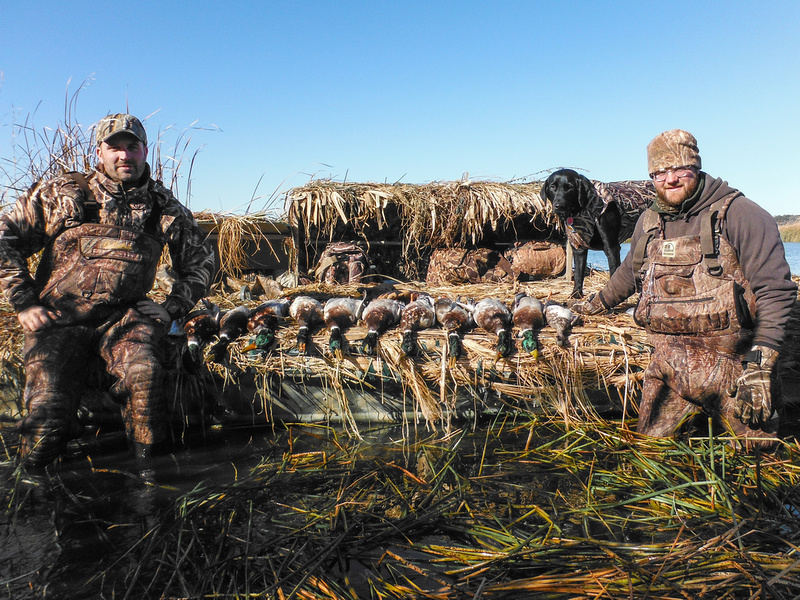
This story came to mind because I shot a turkey yesterday. It was a great story but one that I'll save for another post because it's long (7 days worth of hunting on a large public land piece). One of these non-gobbling turkeys came in late yesterday afternoon, just about as I was to head home. I was in the middle of some thick brush and cedars when I shot him. I spent a little extra time tagging and examining him as he was one of the more rewarding hunts I have had. When I came out of that thick cover I must've sounded like Bigfoot. Once back in the oaks and could open my eyes again I saw another hunter standing about 50 yards away...no doubt he had heard my shots only 15 minutes prior.
My first thought was that this was going to be interesting to see how this plays out. The first words between us though were, "I hope I didn't screw up your hunt". I was surprised he was apologizing for being in the area. Relieved, I said with a smile, "No worries man, it's all good" as I pointed to the tail fan sticking out of my turkey vest.
I walked down the draw to him and we proceeded to discuss the turkeys in this area, hunter pressure, where we lived, etc, for the next 30 minutes. Turns out he was new to the area and didn't sound as if he had many people to hunt with around here. I offered if he didn't shoot a turkey that night, to go out with him the next day. We exchanged phone numbers and names there in the bottom of South Dakota river bottom and, even though we didn't hunt today, we are meeting at 5:30am tomorrow morning to hopefully track one more of those sneaky gobblers down.
Photo: Me with my turkey from yesterday :)
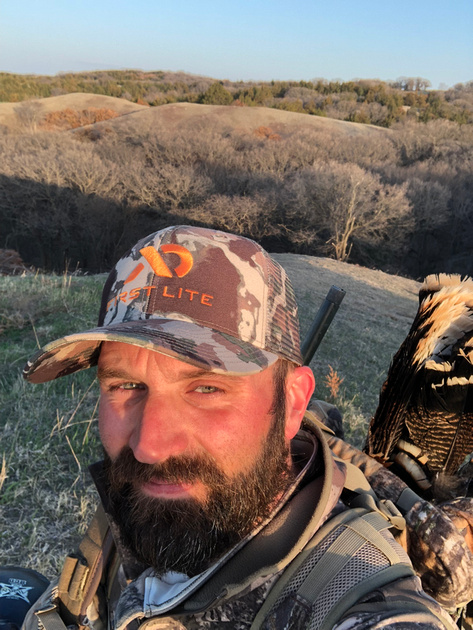
A quick swipe through any social media outlet during duck season will give you an often humorous glance of the three main face concealment options. In order of cleanliness they are; the traditional and easy "keep your face down" method, the "always in your way facemask" method, and the "Aztec warrior, smear facepaint all over yourself" method. For a good laugh, I will sometimes read the comment sections of a post about which facepaint to use. The way that the varied and emphatic ideas come across, you would think that ducks are either borderline geniuses in their reasoning abilities or are the dumbest creatures on the planet, barely able to discern friend from foe. The crazy thing is that they are all right.
My personal preference for duck hunting is to go both facepaint-less and facemask-less. Sitting in the boat or blind all day with facepaint on takes away some level of enjoyment for me and I don't feel like my face has cost us ducks, at least not in a manner that we couldn't somehow avoid. A facemask for duck hunting is just a big "NO" for me. It's in the way of calling, eating, constantly getting caught on my coat, etc.
Turkey season brings with it a change in my opinion on concealment. During the Spring I spend a lot of time in the turkey woods. My face concealment requirements for turkey hunting are significantly different than for ducks. The hunting situation for a turkey is so different that I feel it necessitates a different focus on complete concealment. Two main factors really dictate the need for a facemask; the fact that we are on ground level, eye to eye with turkeys and the ability of a turkey to stop and take its time when approaching.
Photo: 3/4 Facemask before being used
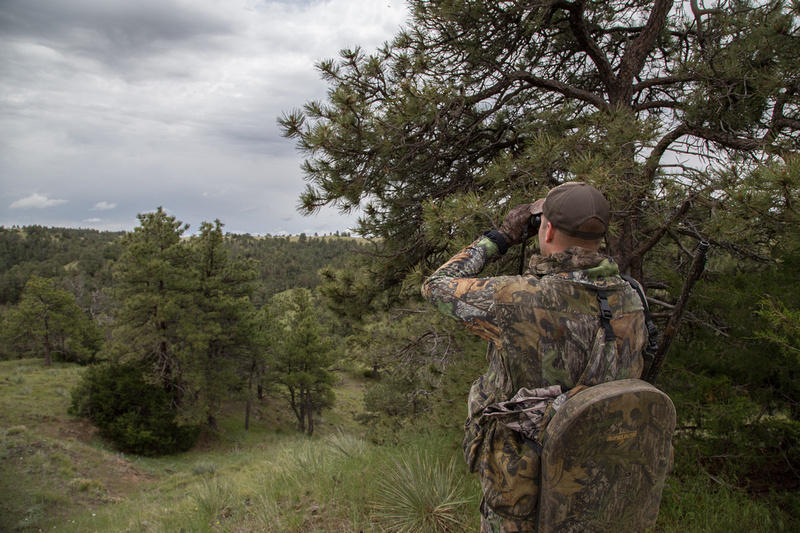
Standing in front of the available facemasks at most retailers can be fairly daunting. A lot of options exist but most of the newer, high tech options just don't appeal to me. A once fairly basic piece of equipment has evolved over the past ten years. I don't think many turkey hunters were complaining about facemask options but designers kept making fancier and fancier options, eliminating the basic ones from their line. I speak this way of the new ones with some resentment because my favorite facemask is becoming a thing of the past.
With absolutely zero connection to this company, I say that the most practical turkey facemask is the HS Strut 3/4 mesh (https://amzn.to/2JuZNQG) version. It's one of the cheapest ones available but in this case I still think it's the best. Before I put my vest on, after getting out of the truck in the morning, I grab my face mask and slide it on. The mask hangs around my neck until I need it, at which point I simply pull it up and over my nose. Almost instant deployment, it's not always in my way, and it provides the cover that I need. I know that I only have a couple of these left...typically the elastic lasts a couple of years so I replace them fairly regularly. A quick look through Amazon and I could only find one option to buy them, so I bought half a dozen.
Photo: 3/4 facemask in use
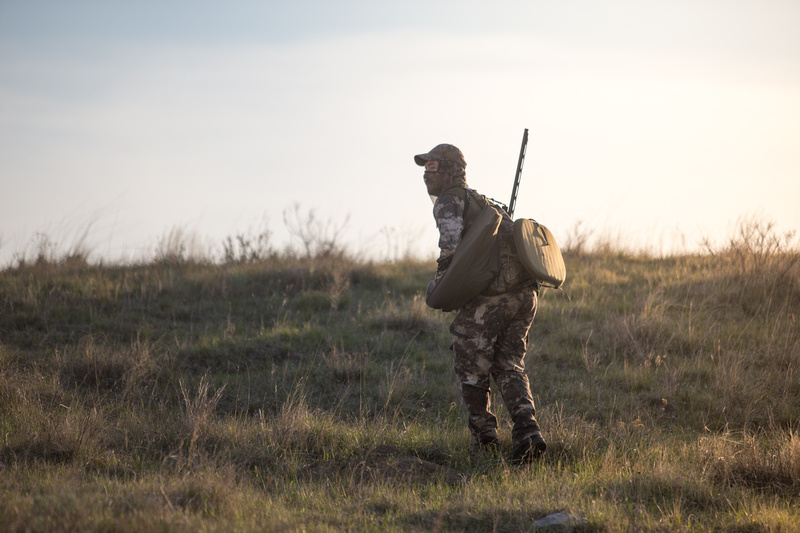
I like and believe in facemasks for turkey hunting. Somewhere in this mesh material there lies a mystery, however. Most mornings of turkey season in South Dakota are fairly cool; often in the 20s or 30s, and always windy, it seems. Every morning when getting out of the truck and looking at my clothing heap in the back seat I am faced with the decision of how many layers to put on. I need enough to stay warm for the first sit of the morning but not so many so I have to fill my turkey vest up with removed clothing one hour into the hunt. In the morning, with cool temps and a light breeze, I slip my facemask around my neck and await a nice little warm up, feeling like I just put a neck gaiter on, but it never comes. I am a big fan of neck gaiters and love keeping my neck warm when it's cool out but a mesh facemask offers no help to ward off a cool breeze. I reposition it, trying to bulk it up right at my skin, but to not avail in maintaining any warmth.
As the day warms up and I'm exerting some energy I usually make a stop and lose an underlayer. It's always right at this point that I recognize how much heat my facemask has retained around my neck and in the opening of my jacket. Somewhere throughout the morning, my facemask has developed some insulating properties but will do no such thing when I actually need it. As the morning sun turns into afternoon heat, the wonder of the facemask really takes over and provides even more insulation with the more heat you produce.
I have yet to figure out a solution to this perplexing problem. I know that a heavier facemask would help for the mornings, but would be unbearable later in the day and there really is no solution of a lighter version. I will continue the battle with my current set up; cursing it in the morning for not being warm enough, and cursing it two hours later for being too warm.
Photo: Turkey harvested in South Dakota, mid morning with facemask
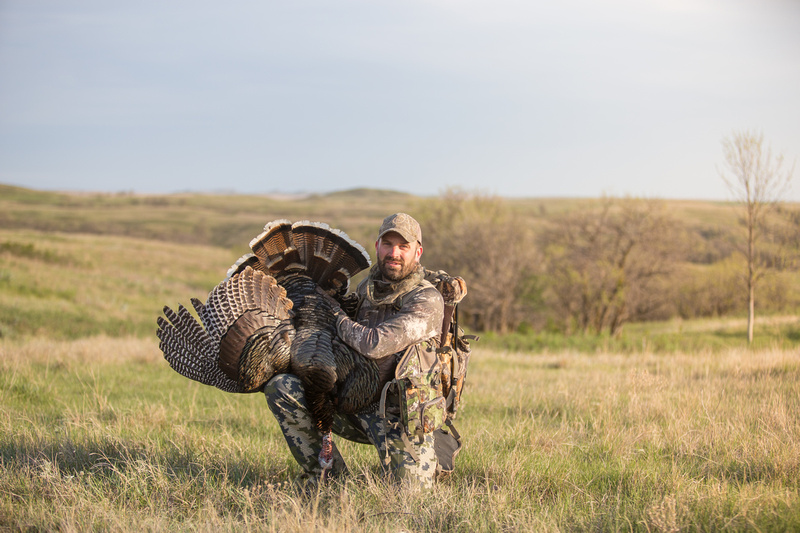
In my opinion there are a TON of crazy myths in the waterfowling world. One of the worst myths that almost everyone falls into is the total fallacy that snow geese are "sky carp" and unsuitable for eating in any form other than jerky or sausage. My first taste of snow goose, cooked amazingly well, was on a trip to eastern SD about 15 years ago. A friend that we had met at a calling contest invited a couple of us out to join him on a late spring juvie snow goose hunt. He had been hunting for a few days and had a bunch of birds already. When we arrived at his rented trailer house (rented especially for snow goose hunting for the month of March) there were half a dozen snow goose breasts in the oven. When he opened it up to show us, I was nearly aghast when I saw that they were not in some form of soup, broth, marinade, bacon, etc. All of my experiences with eating or attempting to eat any form of waterfowl before that involved some manner of heavily seasoned sauce designed to entirely cover the flavor. So when I saw that we would essentially be eating plain snow goose with only a thin rub on it, I was ready to head to the gas station and pick up some chicken strips.
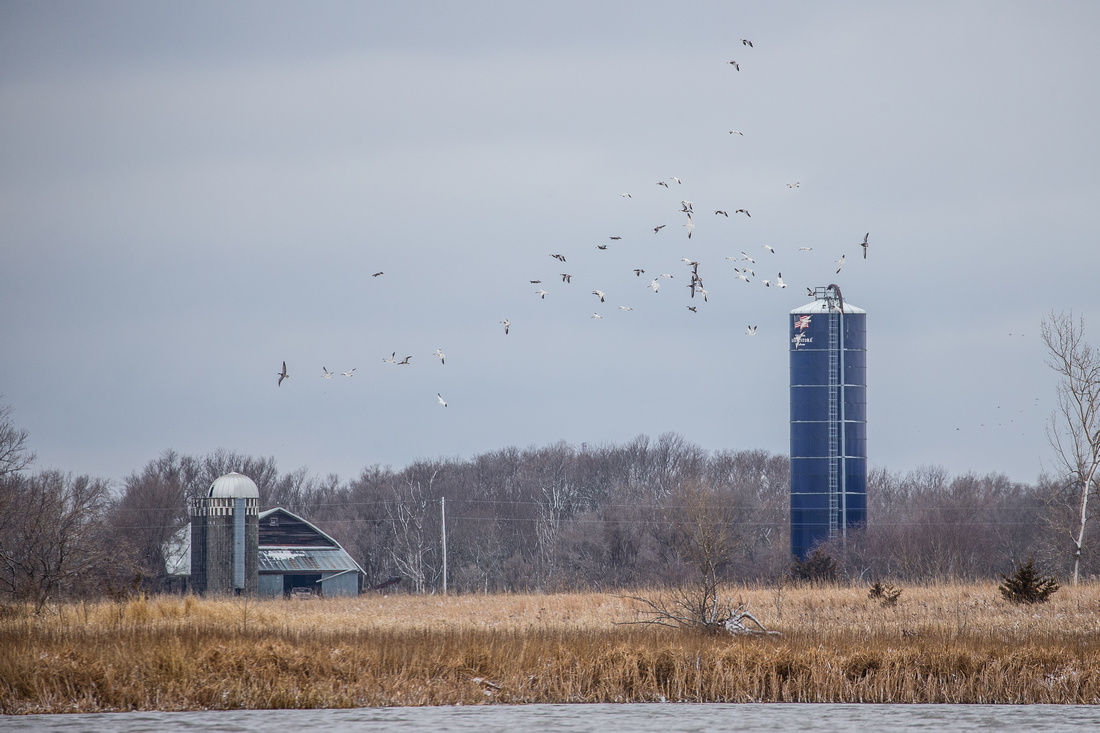
Above: Snow geese on a cold March day in South Dakota.
I was so pleasantly surprised by the taste of his prepared meal, mixed with a light plum sauce, that I always knew in the back of my mind that waterfowl could be delicious. Over the years, after trial and error and many less than desirable meals I finally cracked the code last fall. I am convinced that THE main problem most people have with waterfowl is that they are overcooking it. It takes a bit of a leap to really eat it when it's still red in the middle but it is really the only way, and it is really quite good. A huge breakthrough/revelation for me was last year when I bought a sous vide machine. If you hunt waterfowl of any sort, and struggle with ways to deal with the meat, I would urge you to pick one of these up. You almost can't overcook the meat and it will come out perfect every time. Read up on what they do, how they cook, and pick one up, I got one for $120 on Amazon. It was an Anova brand with the bluetooth connection to use your phone to control it...really slick.
We used that to cook mallards all last fall and both myself and my girlfriend went from dreading having to deal with duck meat to being excited for a day I got to out hunting so we could have duck again...a total 180 degrees from before! So here is the recipe that we used for some snow geese from earlier this week.
Ideally, pick some younger snow geese if you happen to have some.
Breast out the geese, being extra attentive to ensuring that you have all of the slimy skin off the top and all of the "silverskin" off as well. This process takes a few more minutes but is well worth it. I also spend an extra few seconds and cut out the little corner of the breast that has the big veins, tendons, and more silverskin...again, well worth the brief time spent.
Once you have the breasts out you'll want to get a big bowl to soak the meat in. My typical routine starts with me spending a bit of time cleaning the meat under the sink and washing out any blood from pellet holes and getting any other gunk off of them. Once that is all done I put them all in the bowl, with cold water, and a fair amount of salt in the water. I don't know the quantity of water but I pour a pretty good amount in, based on the size of the bowl. The salt helps to pull a lot of the blood out of the meat. Let the meat soak for anywhere from a few hours to overnight and repeat that process again. I will also at that time go ahead and squeeze each breast (don't get any funny ideas) to try and get any excess blood out that I can at that time. I will then let the meat soak for a day or two, depending on when I get around to taking care of it again. At this point you are ready to start the actual recipe.
You don't need much for ingredients but most guys probably won't just have them laying around the house so you'll need to make a quick run to the grocery store, while you're there I'd recommend a good beer to pair it with. So I've never written a recipe before and I don't really read many so I'm just going to plot it out below for you as I think about it:
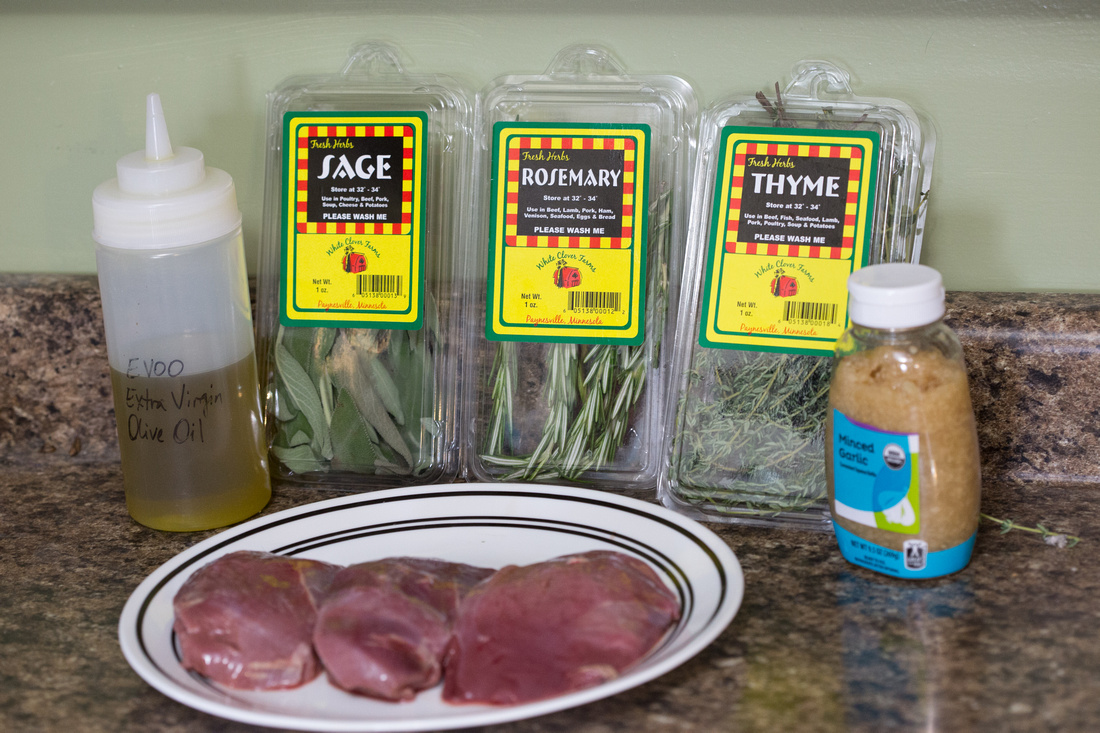
Above photo shows all the ingredients for one batch of sous vide snow goose!
-Take your goose breasts and put them in your food saver or ziploc bag (Ideally you'll use a vacuum sealer, if not, a heavy Ziploc freezer bag should work as well). I put three in one bag but that will vary depending on which size bags you are using.
-Now apply enough olive oil to coat the entire breast, maybe a tablespoon or two total for all three.
-Here's where you're going to need to go to the grocery store; you'll want to go to the produce section and get some FRESH thyme, rosemary, and sage. They look like weeds to me but I assure you they are well worth putting in the bag. So you take one or two each of these herbs (a full "branch" is what I guess you'd call it) and lay them over the breasts and on the olive oil. The olive oil will become infused with those flavors and soak into the meat.
-While at the grocery store also get a little squeeze bottle of garlic, or you can get the fresh stuff too...the squeeze bottle is nice because you can keep it around for whatever else you may need it for and it seemed to work for me pretty well.
-Now you're ready to seal up your bag. A vacuum sealer is again ideal, you'll want to seal it twice if you can with the vacuum sealer since the olive oil can sometimes get into the seal and make it not 100% tight. If you're using a freezer Ziploc bag you'll want to get as much air out as possible.
-You're now ready to sous vide these things...I did mine for 3 hours at 129 degrees and it was perfect. So, simply set your sous vide machine for 129 degrees and either set the timer on it or set one on your phone.
This is a link to the same one I've used on Amazon: Anova Sous Vide
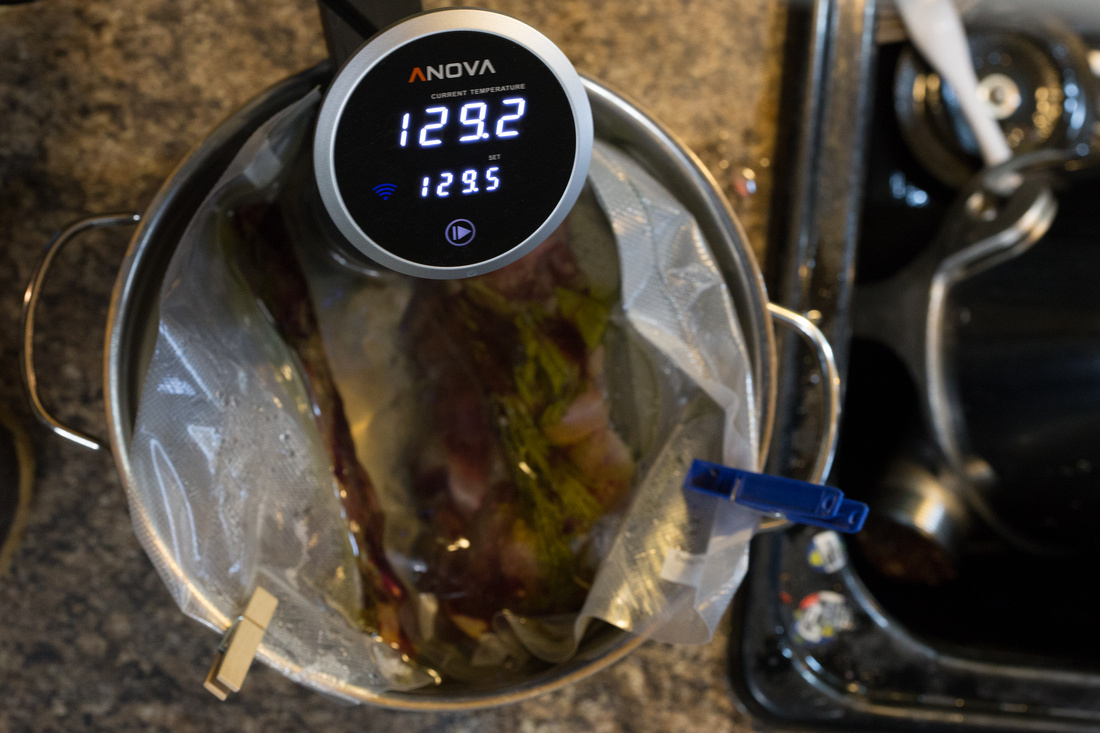
-Come back 3 hours later and take your meat out.
-The last step isn't absolutely necessary but it does help. We had our little grill heated up and threw them on the grill for one minute on each side just to get a little sear on the meat. It basically just adds a little better look and maybe a touch more texture to the outside of the meat. We also did let ours cool down considerably before putting it on the grill and that worked better than taking it immediately out of the water and putting it on the grill...I think you'd run the risk of overcooking it if you did that.
-Slice thin and enjoy. It really is amazing!

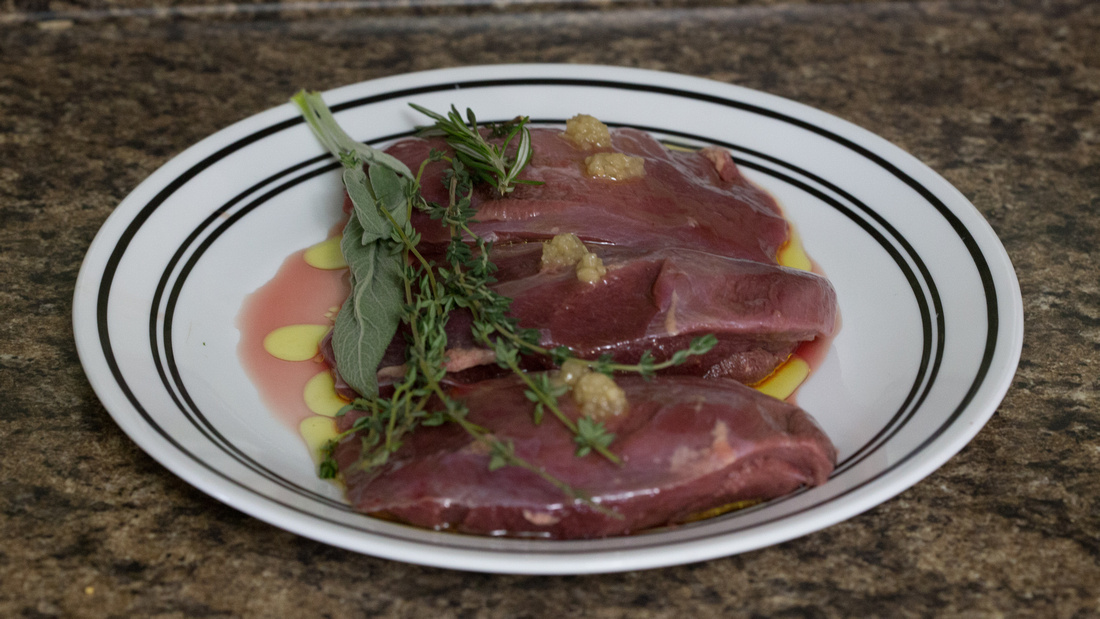
Above photo is what it should look like before you put in in the vacuum sealed bag to cook it. Below photo is what it will look like once it is sealed up and ready to go for cooking.
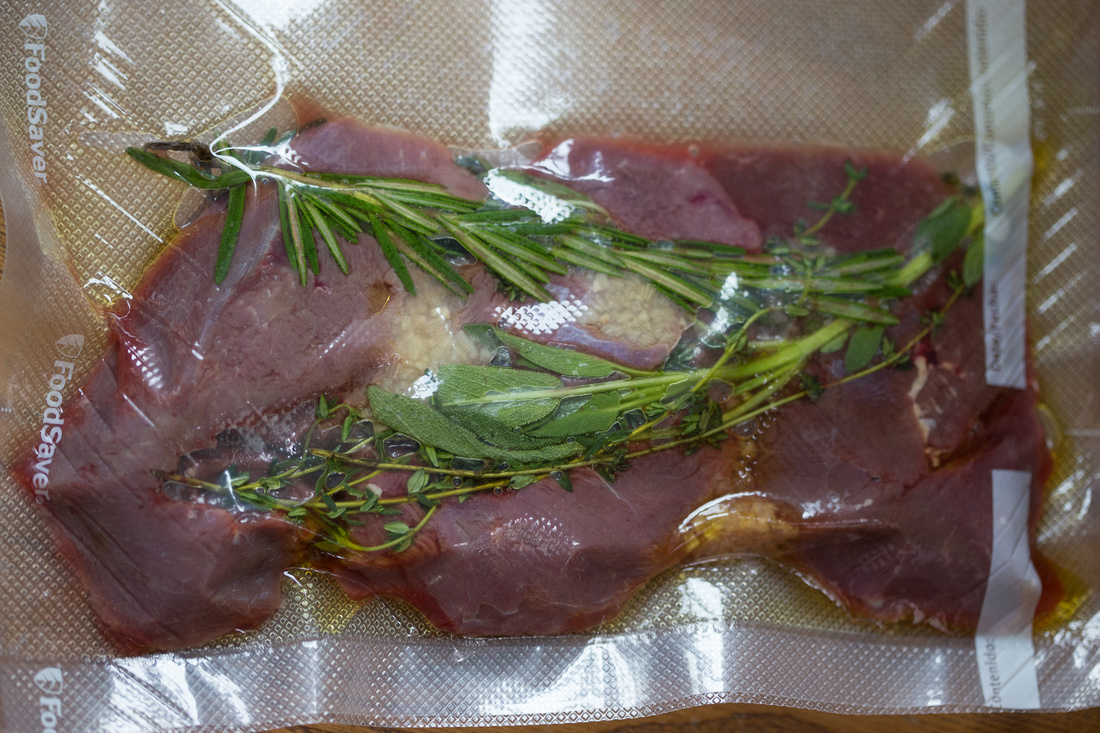
After having spent enough days in the marsh, there comes a point where you just know whether or not things are going to work out for you on any given day by the time the sun creeps over the horizon. If you don't have ducks landing in the decoys in the dark while you're cooking bacon in the boat, the odds that it's going to happen later in the day seem slim. For my days in the spring with a camera I can just sense how things will go as I am walking out...taking into account things like the clearness of the sky (sunnier the better), presence of a decent wind (10mph+ and in conjunction with the wind at my back), ducks surrounding my specific spot, and just that general sixth sense awareness that you have after doing it enough times. The evening of March 26th I checked the weather forecast and saw West winds predicted for the next morning. That is not something to be excited about for a duck photog...at least in the AM hours.
For those unaware, ducks typically land against the wind. Against a west wind they will be coming from the East. It just so happens that in the morning the sun rises from the East. It's incredibly difficult if not impossible to get a decent photo of a duck when facing into the sun. It has nothing to do with the ducks themselves, but all about how a camera works with the light that is available. Typically in that scenario you have a very bright background with a shadow for a duck. While this can create some interesting perspectives, that isn't generally the images we are looking for. So ideally in the morning you have a wind anywhere from Northeast to South...anyone worth their salt can make something work with that light in the early hours of the day. As the day wears on you want to see a westerly wind as opposed to east...to follow with the sun behind your back.
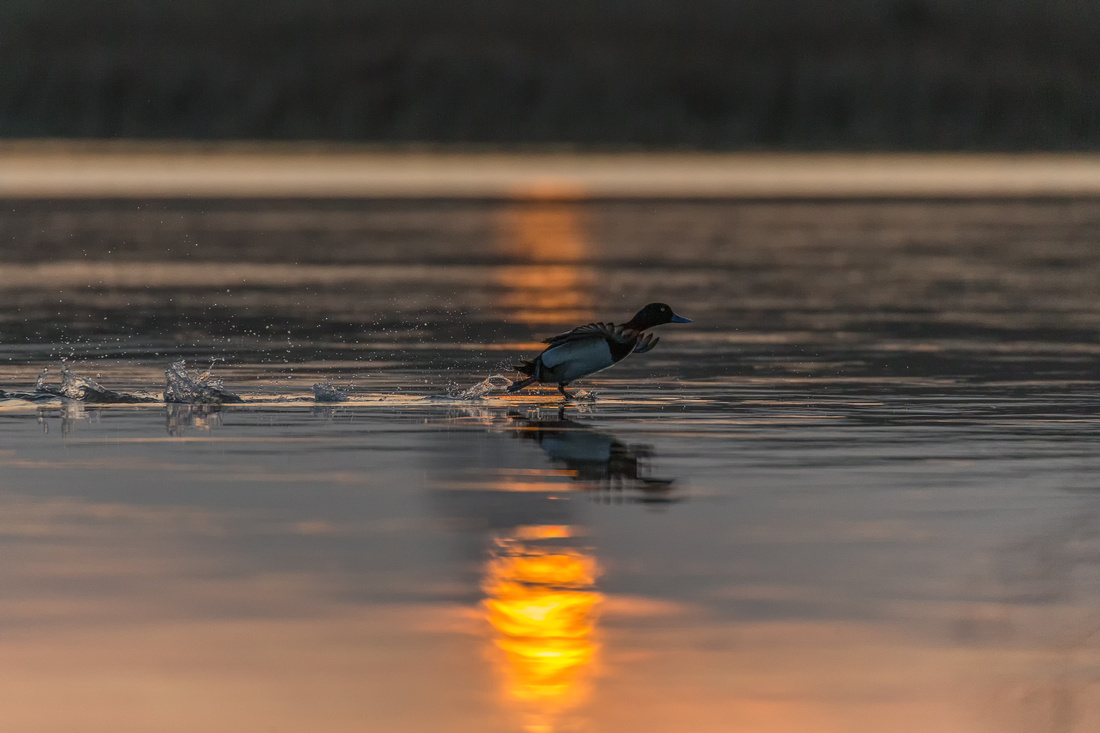
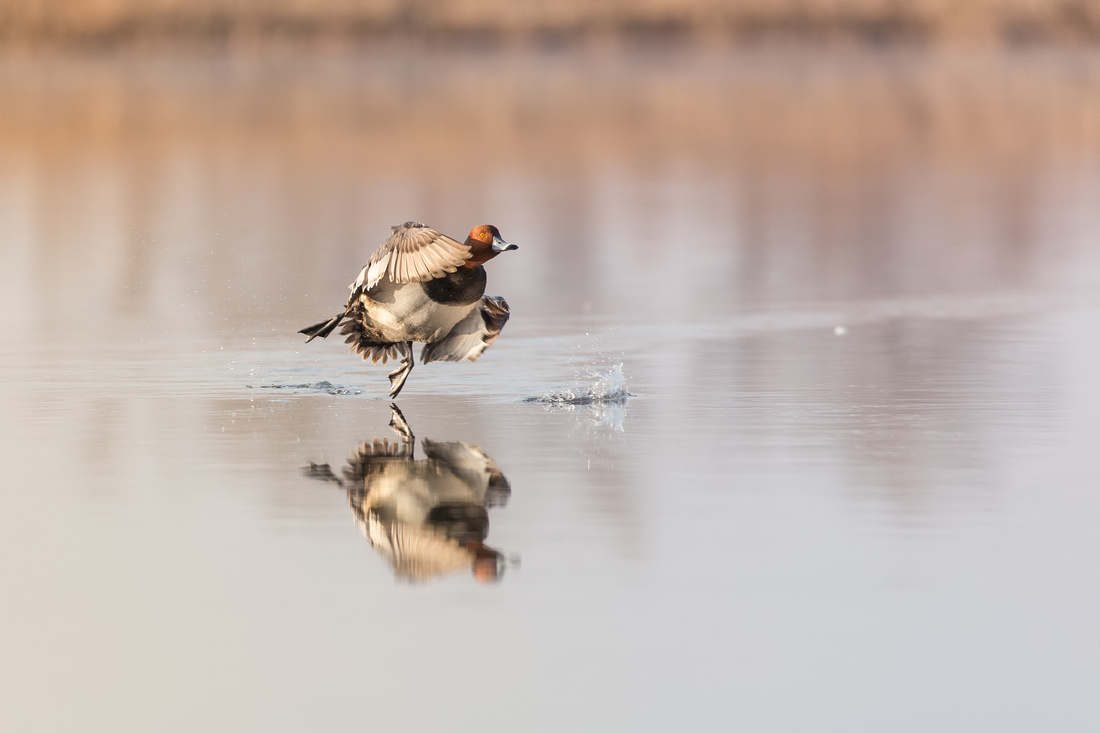
There are two reasons for wanting the sun at your back. The first and most obvious to a photographer is that the subject will essentially have a spotlight on it, giving you the best lighting situation available. The second reason though is typically not as obvious to someone who doesn't spend much time in the marsh in a duck boat. If you've ever looked at an object against the sun, generally all you can see is a shadow against a bright sky. This lighting situation will "hide" you better than any camouflage or blind that has ever existed. The image below is a shot I took of a friend shortly before the sun found the horizon.
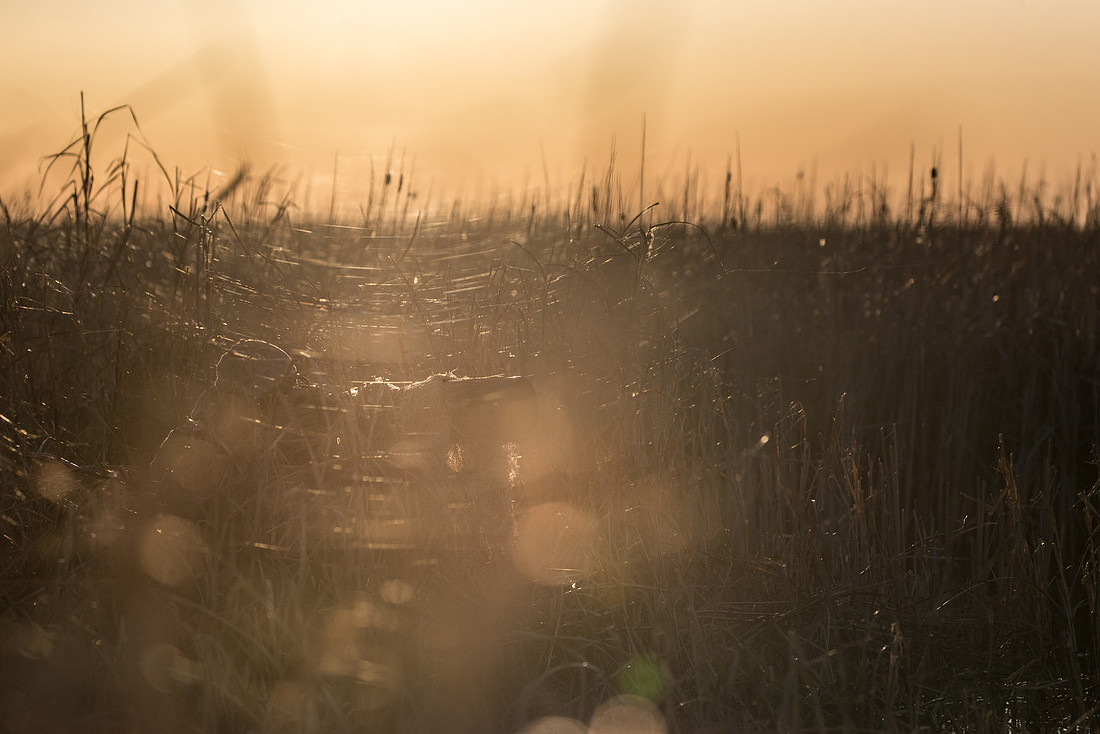
So, as I read the weather forecast on that night, I knew the next morning was going to be difficult at best. Having the wind in the opposite direction we wanted, I decided to not even try for the typical shots that I go for, but instead to try for something different. Side illuminated and back-lit subjects were going to be my focus. That is, until the first duck came straight in and I couldn't resist making an attempt. We moved three different times, hoping that a slight change in our juxtaposition to the sun/wind would help make something interesting happen but it really never worked out. So we called it quits for the morning and hauled all of our gear the 1/3 mile back out to the trucks.
I got home and had a few hundred images on my camera. I actually had some that were surprisingly good and unique. The majority however, were immediately discarded. As I spent some time that mid-day catching up on editing from previous days, I kept my eye on the weather forecast and saw that the sun was going to stay out and the winds would stay strong from the West. With this in mind I had to go check out one of my favorite sloughs. The main intersection is about a mile and a half away from the slough itself and I could already see ducks swarming over it. As I approached I had a smile as I drove by and saw it loaded; mainly with redheads, mallards, and some bluebills. I texted my buddy and told him to get here asap and that I would be setup already waiting for him.
A quick canoe paddle brought me to the west side of a beautiful,shallow, cattail marsh. The water was about thigh deep and I didn't have my taller stool along for the day so I was lucky to use a 5 gallon pail, which put the better part of my legs and butt in the water. Even with waders it gets cool quick in 33 degree water. With about 50 decoys set out in front of us we sat and watched a few flocks and half a dozen singles essentially ignore us. We made an executive decision to move down about 40 yards to a small point. What a decision that was. As we were still standing in the decoys we had redheads landing among us after our quick relocation.
I hurried to get sat down as quick as possible and get my camera and "seat" arranged. Almost immediately we had birds coming in and flying by us in some of the most perfectly filtered light you could ask for. In two short hours I took approximately 1700 photos. It was one of those evenings where it was so good that I actually recognized how good it was. I've done this a fair amount more than Ray has and I'm sure he was annoyed with how much I made a point of acknowledging how good it was but I couldn't just let something like this slip by without fully relishing in it. It seemed as if a duck wasn't able to resist the gravity of our decoys...almost everything came in, and came in close, and was washed with a perfect golden glow of light. So perfectly were things working out that barely a shot was out of focus as they approached. I have never seen my own face as I rip off 20-30 photos of an incoming flock of bluebills or a single mallard drake, knowing that they are all in focus, but I can only guess that the smile on my face is rarely equaled.

Twilight always creeps in on these types of evenings. You don't so much notice it getting darker but you notice by the amount that you have to keep adjusting your camera to allow it to take in more light. During the last 20 minutes of usable light you feel as if you are constantly checking to make sure that your images are bright enough, and reacting accordingly. Although there is never a clearly defined time when it's too dark, you just notice that time period has arrived and on this evening we stuck around probably longer than we needed to but this doesn't happen all the time so it's fun just to let it happen. An extra 15 minutes at sunset to watch the spring migration unfolding right before us is 15 minutes that I will never regret.
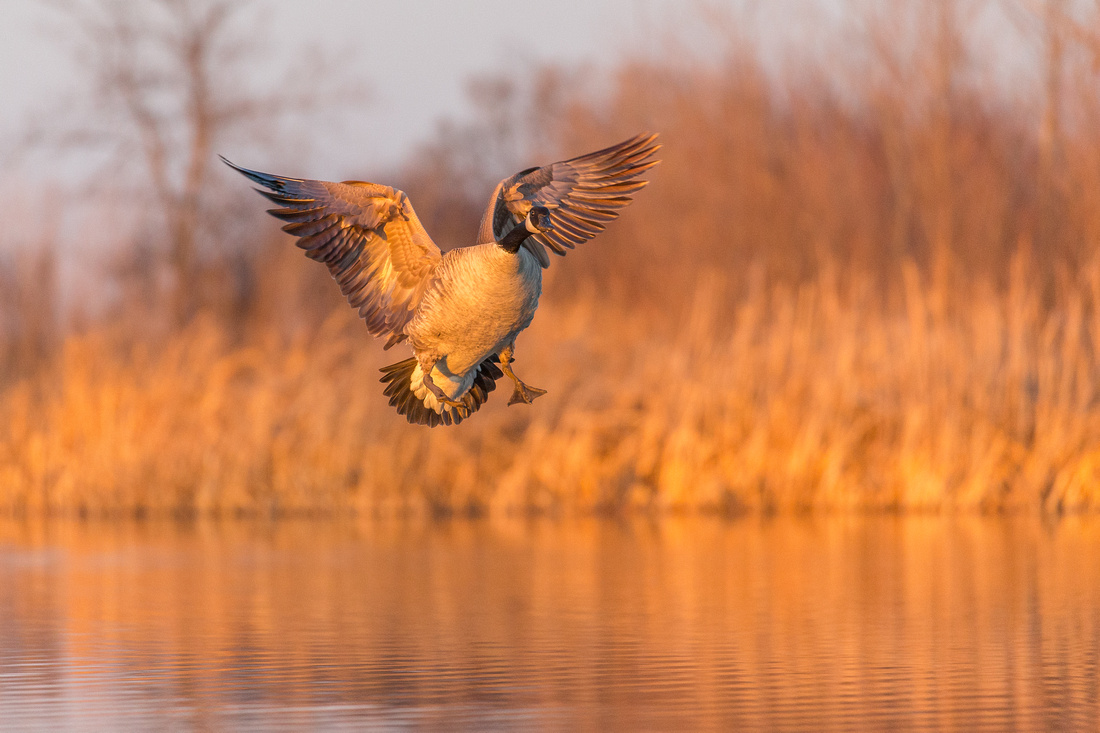
Topping the list of commonly asked questions on my Instagram page is, "What camera and/or lens do you use?". I will always answer with my current setup, even though very few of the photos were probably taken with that particular combo as it's new and hasn't seen much time in the field at that point but each new camera or lens I buy follows in the same path as the equipment came before it. Before I answer the question though I always ask the question of, "Which type of photos are you looking to take mainly; incoming ducks or general photos of friends while out hunting?". I'm going to focus this discussion mainly on the "duck photo" side of life but I will also touch on some aspects of general outdoor photography as well.
GEAR LIST FOR WATERFOWL PHOTOS
1. Camera Body - Currently I am using a Canon 1DX that I bought barely used this past fall. It is one generation behind the newest iteration of this camera, the 1DX Mark 2. Prior to that I had a 1D4, and prior to that I had a 1D2, each which were one generation behind the newest version that was available. I wanted to get the best possible camera I could afford at the time that was going to have top-notch focusing abilities and a heavy duty build/construction. When shooting photos of a bird approaching you at 20-50mph the focusing ability is always my biggest concern. Both Canon and Nikon will have very suitable cameras for this type of action, and some other cameras that I can think of off the top of my head that would work well also include: 7D Mark 2, 5D Mark IV, Nikon D500, Nikon D850, Nikon D4 or D5. There's definitely others but these are the ones I would currently be considering that come to mind.
2. Lens - My approach to waterfowl photography is perhaps different than what the textbook would say. Most guys doing this have a 500mm or 600mm F4 lens and they mount that onto some form of a tripod and gimbal. Undoubtedly that is a very stable system and gives a great platform for shooting photos. Currently I don't enjoy that method and I use a much smaller setup, which I do for several reasons. My current lens is the fairly small Canon 100-400mm IS USM Version 2 lens. I am able to hold this combo easily with my hands and no need for a tripod. Being able to do this has given me more flexibility in tracking birds that are more often than not, quite erratic. So in place of longer reach with a bigger, less mobile lens, I have opted to work on getting closer to where birds want to be and work on hiding to get those birds in closer. Both methods have yielded amazing images for those using them, I just prefer this way for now. Down the road I imagine that I will have a big prime lens on a tripod, but I feel as if i will always want to have that 100-400 sitting next to me on a separate body waiting to go for when the situation calls for it.
3. Extender - I do own a 1.4X Version 3 Canon extender. I rarely use it. No matter how good they are, there always seems to be some loss of image quality when using an extender so I only use it when I absolutely cannot get close enough to the birds. Focusing tracking is also more difficult with an extender as well and you will undoubtedly miss more shots with one attached than without.
4. Miscellaneous Accessories
- Ghillie Suit - Despite the fact that I hate wearing it, I do wear a ghillie suit jacket in almost all circumstances unless I'm in a snow situation. The degree to which they will hide you is pretty amazing.
- Seats - I have three different stools that I use. I have a MoMarsh layout seat, I belive it's called the Invisi-Lounge. I made a custom aluminum frame for it since the hinges tend to give out after a few years but the seat it self doesn't soak up water and is fairly padded. I love using this seat because it keeps me as close to the water as possible for a better low angle shot. If the water is too high I then move up to a seat that would be considered a "turkey lounger". It's a fold up chair that sits a few inches off the ground. The idea is to stay as low as possible to the water's surface...this is both for hiding purposes and even more important for the angle of the shot. The last option for when the water is thigh-high or more is to use a regular little blind stool. With a lot of snow melt this year I have had to use this stool a fair amount and it's worked great for hiding in cattail clumps or similar.
- Transportation - My main method of getting around this year has been with a small 12' canoe that doubles as a sled until I get to the water. The ability to get "to the other side" of a marsh is often critical in being able to shoot at any particular location, depending on wind/lighting conditions. I also use a large Jet Sled to carry everything in in case the canoe just isn't feasible for that spot.
- Decoys - In the spring I will put out mainly diver decoys as it seems that everything decoys to them pretty well, and divers definitely come to the white decoys better than they would to mallard decoys. My spread this year has been about 30 decoys up to about 50.
Beyond that list I of course use waders, typically Banded insulated breathables, gloves (wool with flip open finger covers so you can operate the buttons easily when needed), memory cards, camera bag, etc...but all of that is really just up to personal preference.
If your photographic interests tend more towards the lifestyle and general hunting photos than towards actual bird photos, your camera and lens choice will not need to be so specific towards focusing capabilities. At this point, almost any dslr/mirrorless camera built from Canon, Nikon, Sony, etc will all be very effective at capturing scenes around the blind. Wider lenses will be important so that you can capture what is going on around you, often in tight spaces and lenses with fairly fast apertures will be important as most of the cool opportunities occur at the times of little light.
The absolute most important advice about gear is: USE WHAT YOU HAVE! There is no magic camera that is going to suddenly make you a great photographer. New and more advanced gear is rarely taken advantage of by those who didn't master their current/previous camera. There are a lot of people out there taking amazing photos with gear that is definitely not considered up to date, and there are a lot of folks out there with $5,000 hanging around their necks that may be better off with an iPhone in their hand.
Leave a comment if you have any questions.
The pursuit of fowl, for most who chase them at all, unless you are one of the deranged snow goose hunters, tends to be non-existent in the spring months. In my case it is almost as strong as in the fall. The bulk of my waterfowl photography comes during the months of March and April with the large bulk being solely in March unless we get lucky and have a cool spring. This year happens to be one of those times and we are in the middle of a deep freeze that feels and looks more like February.
Having had up to this point only a couple short bursts of warmth, most of the marshes and lakes from my home range and north are still frozen over. Many of the bigger ones still sporting vehicles and ice fishermen. The melting snow from our last storms has made for abundant habitat for waterfowl on their way back north despite everything else being frozen over. Basically anything that was water before fall is still ice and anything that collects meltwater is a collecting pool of just about any type of duck you can think of at this point, at least until two days ago.
Very little open water can resist 5 degrees above zero. My morning from today was spent reaffirming that theory. The spot on my cell phone where my weather app sits is probably more worn down than any other part of my screen and with the forecasts that we have had lately, even more so. When I saw single digits predicted I was quite excited because that means one thing in particular to a waterfowler or a waterfowl photographer that is sitting right at the cusp of the migration...concentrated masses.
The roads were still nasty this morning but I don't have to drive far this time of year to have mega amounts of birds to choose from. The first two spots on the list; both due to proximity to home but also to closeness of vehicle access to the south side of the marsh, were both frozen with only a few birds sitting on the ice where a thousand or more had been the day before. Most marshes had small spots of open water that were packed full of birds essentially swimming in circles. My next spot to check out wasn't far and at half a mile away I could already see a pretty steady stream of ducks coming and going...now the wait to see how much water was open, and in turn, how much work I was going to have to do.
Pulling through the field approach on the side of the 50 acres or so of water I wasn't too thrilled to see only several open areas of water, none of them being along a southerly shore (this being important due to the south winds and sun at my back). So the work began; put on waders, warm hat and gloves, get out camera equipment, unload canoe and decoys. At this point the canoe was merely a substitute for a sled to carry decoys and other gear. A few inches of snow proves much easier to drag a sled over than dry phalaris grass.
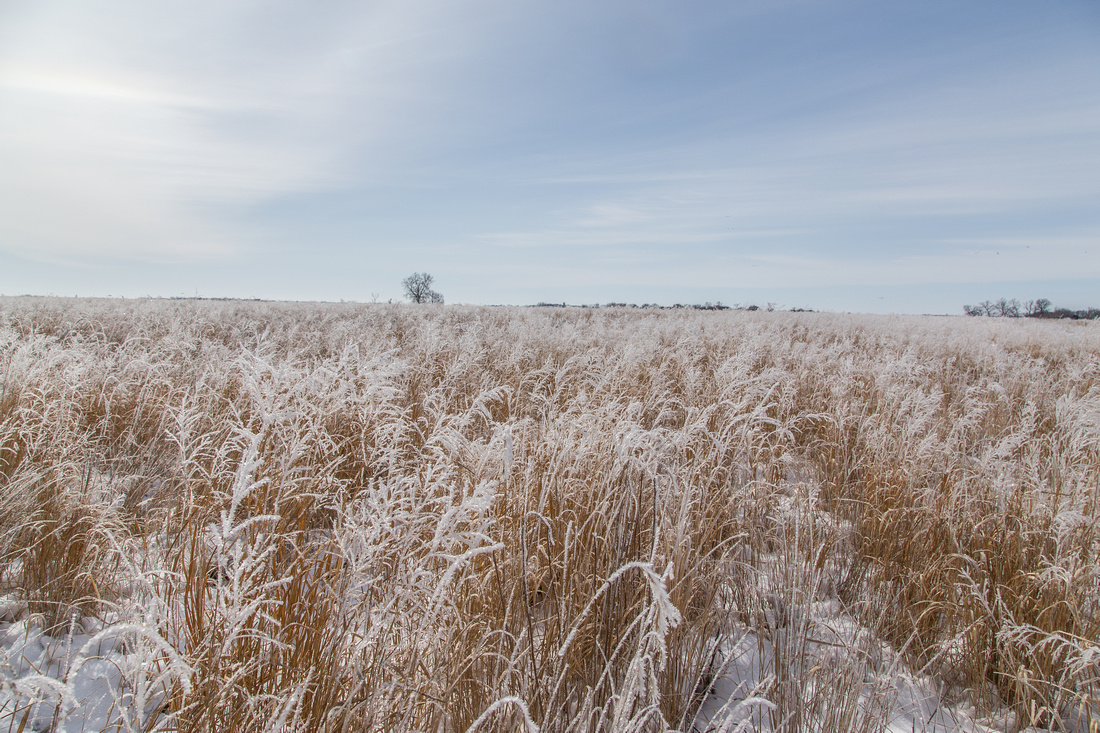
I was surprised by how easily I was able to haul my gear the 500 yards to a cattail point. When I got there, the ice wasn't quite enough to stand on and I broke through on my second step out from shore. Keeping the canoe next to me for stability and ice breaking assistance, I proceeded to "cut" a hole approximately 50'X50' on my downwind side (to the north). For those unfamiliar with this process it is fairly straightforward. You break an outline in the ice about the size of the overall hole you want, being careful not to crack or break the large piece that you are cutting "out". Once you have the cut completed you push the sheet of ice under the surrounding ice, leaving you with a nice big hole of water surrounded by ice. I filled it with 40 duck decoys and found a spot to put my low profile stool in the cattails.
There's days that are amazing for photographing ducks and days that are miserable; this one fell somewhere in between. It was very cold, windy, and a fair amount of work to get an open hole in the ice. I had almost non-stop flyovers and fly-bys of bluebills with most not coming quite low enough to be anything other than a blue sky shot so I didn't take many of those. I was lucky enough to be treated to a lot of interactions with buffleheads, the trickiest of the ducks to get an in-flight photo of.
By mid-afternoon the lighting situation had diminished to a point where the photos weren't what I was hoping for so I started packing up. As I got out of my stool in the cattails I noticed that there was a lot less snow right around me, to the point that I probably looked silly sitting in a white cover up. My eyes gazed to the grassy hillside that I had come down in the morning with my canoe behind me. It was covered in snow at that time. That snow was gone now. Anyone who has ever pulled anything will know that snow is a much better sliding surface than grass. So plan B went into action and I I ended up walking back along the shore, breaking an inch of ice the entire way back to the closest spot to my truck. Those walks are much easier with a camera full of good photos, luckily this was one of those days.

If you've managed to find your way to this blog you probably share an interest in waterfowl, waterfowl hunting, or waterfowl photography with me. I cannot deny that these three things consume an inordinate amount of my time and my thoughts. By the time I had reached ten years of age I was already spending time out in the marsh and every spare minute down at the local lake watching, identifying, and replicating calls of the ducks and geese in the area. My interest in photography really piqued as a vehicle to spend more time around waterfowl and share what I saw with others. Since then I have expanded my photography to include a broader array of subjects...after capturing a 2lb bird traveling at 50mph, everything else seems easy!
I will relate some of my own experiences, stories, interests, photos, and memories of my life in the world of waterfowl through this blog. It should also be fair to expect some tips and basic tutorials on how I shoot photos, some musings on our public lands situation, musical interests of the time, and anything else of interest at the moment.
Thank you for following along!
Phil
